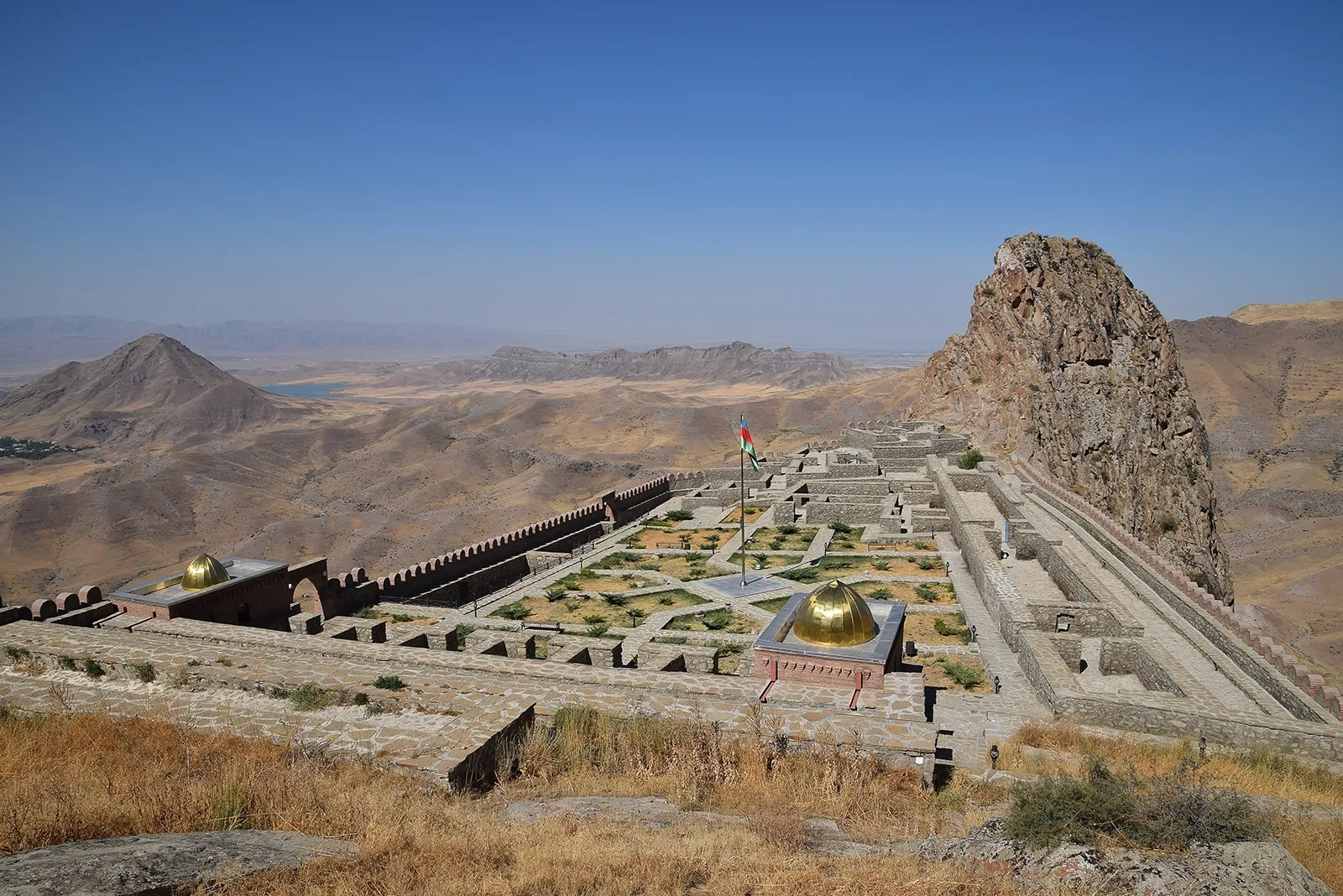Nakhchivan
Nakhchivan was an important stop on Silk Road routes and a trade center where natural dyes, dried fruits and meat, salt, leather, other goods were traded to the commodities from faraway lands. The city of Ordubad was a silk making center. Nakhchivan was also a spiritual and pilgrimage place. Ashafi Kahf cave which was mentioned in Koran is located in with the cleft peak of Mount Ilandag (Snake Mountain) according to some narratives, as well as it is said to have been carved out by Noah’s Ark as the Great Flood receded, and other places.
Nakhchivan architecture school is an important center not only in Azerbaijan, but in Anatolia and Central Asian countries. Mausoleums of Momina Khatun, Qarabaghlar, Yusif ibn Kuseyir; Alinja fortress; numerous caravanserais and khanagahs such as in Julfa and Batabat and bridges are some oldest architectural masterpieces of Azerbaijan. Architects and masters from here have influenced different constructions in Silk Road countries, moreover, they have been taken to Anatolia, Samarkand, Iran and other places to design monuments.
Some of the most important sites in Nakhchivan today include:
- Qarabaghlar mausoleum (14th century) – a beautiful example of Nakhchivan school of architecture with ceramic tile finishing
- Momuna Khatun Mausoleum erected in 1186 in west of the city of Nakhchivan for Atabey Eldaniz’s wife and the Iraq Saljuq king Arsaslan Shah’s mother – Momuna Khatun. The building was ordered to the famous architect Ajami ibn Abubakr an-Nakhchivani. It is made with red brick and covered with rich ornaments. There is a ten-cornered rich tomb on the underground part of the mausoleum. The complex used consist of a mosque, the mausoleum, madrasas and several other structures, but the other structures have not survived till our times.
- The Mausoleum of Yusif ibn Kuseyir – was built in 1161–1162, in Nakchivan city. Architect of the mausoleum was Ajami ibn Abubakr Nakhchivani.
- Julfa caravanserai – Julfa used to be commercial center as a major city on transit routes. From here caravans coming from Azerbaijan and the East to Anatolia. Medieval Julfa was quite developed. Julfa caravanserai is structure left from those times. Today, only some ruins of the building remain.
- Batabat caravanserai – a 17-18th century caravanserai in Shahbuz, Nakhchivan.
- Alinja fortress – in Julfa, Nakhchivan is a fortress on mount Alinja. Alinja fortress resisted the army of Amir Teymur for 14 years. It is known as the place where the state treasure was stored. The treasures of Azerbaijani Atabey, Qaraqoyunlu, some Elkhani and Aghqoyunlu amirs were kept here.





